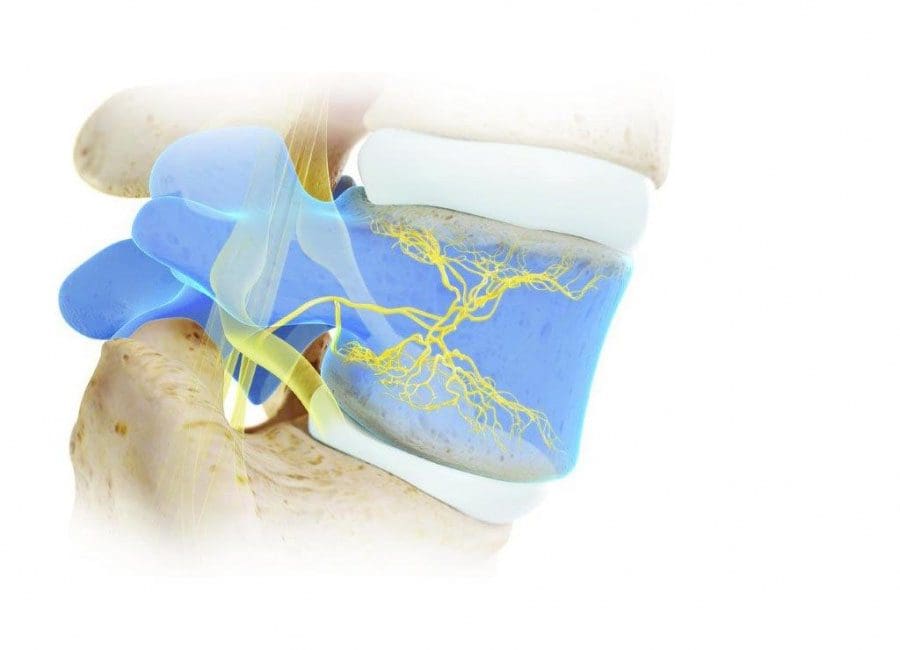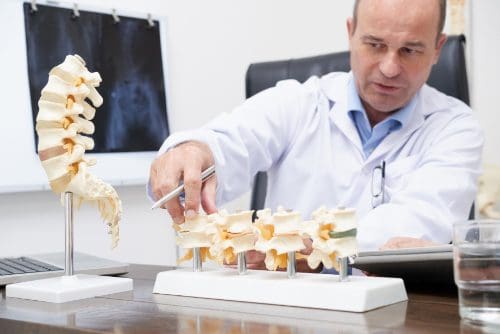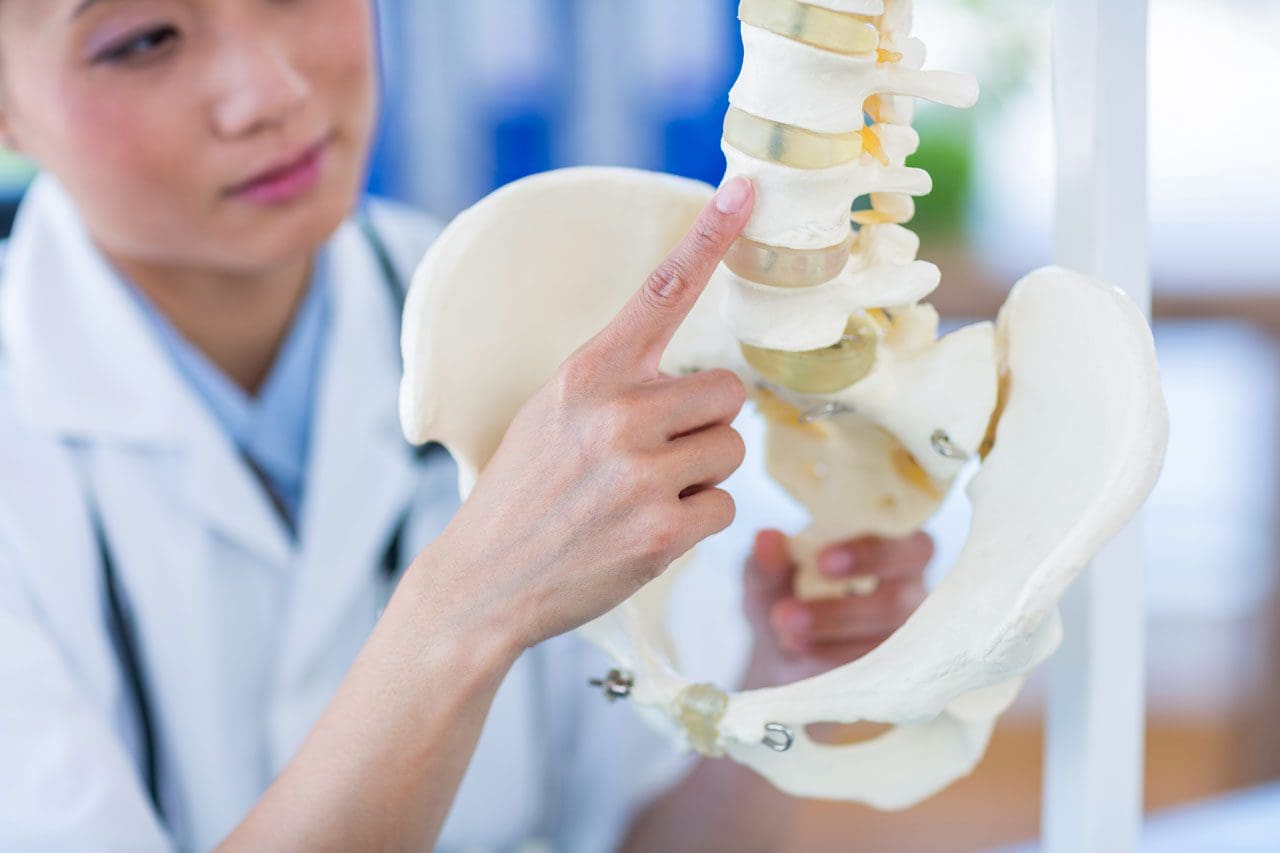
Chronic Back Vertebrogenic Pain and Vertebral Endplates
Research has found that vertebrogenic chronic low back pain could be caused by a lumbar vertebral endplate change that involves the basivertebral nerve and is not disc-related. The underlying cause of chronic low back pain can be very difficult to diagnose. The intervertebral discs are a common suspect, but when disc-related treatments don�t ease the pain, the root problem could be something else. Researchers are exploring an overlooked area with the vertebral endplates being the cause of vertebrogenic low back pain.

Research has found that there are more nerves in the vertebral endplates than in the spinal discs. More nerves can mean higher potential/increase in pain. And like the other areas of the spine such as the discs and joints, vertebral endplates can also degenerate, also increasing the risk for pain.
Vertebral Endplates and Basivertebral Nerve
The vertebral endplates line the top and bottom of each vertebral body. These are the round, thick, weight-bearing bones in the spine. The vertebral endplates are made of cancellous or spongy bone and function as the barrier between each disc and the vertebrae.
The low back/lumbar spine takes the most weight. That can be a significant amount of pressure on the structures in the low back. The endplates are situated between a cushioned disc/s and the hard, bony vertebral body making them vulnerable to degeneration and nerve damage contributing to chronic low back pain. The endplates and vertebral bodies consist of a network of intraosseous nerves.

Intraosseous nerves live within the bone.
The basivertebral nerve� BVN is an intraosseous nerve that winds through the vertebral bodies. This nerve feeds into each spinal bone through the back of the vertebral body and then branches out with nerves going towards the top and bottom vertebral endplates. Research has shown that although these nerves are inside the bone they can send pain signals from a damaged vertebral endplate that could result in vertebrogenic low back pain. This is why it has been�recently linked it as a possible cause of chronic low back pain.
Nerve pain in the spine has been linked with discs that have degenerated. A doctor, chiropractor/spine specialist refers to this as discogenic pain. But with new research, an understanding of the function the vertebral endplates and BVN play in the sensation of pain has been realized and this is where the term vertebrogenic pain comes from. If a doctor discovers that the endplates could be the source of your chronic low back pain, they might use this term.
Vertebral Endplate Pain Diagnosis
Like most back pain conditions diagnosing vertebral endplate pain can be just as challenging. This is because diagnostic imaging scans typically don�t pick up mild to moderate endplate damage. A classification scale known as Modic changes helps doctors identify vertebrogenic pain.
Modic changes or MC are areas that show up on an MRI showing bone marrow damage that has been linked to low back pain. The name comes from the doctor that classified them in 1988, Dr. Michael Modic. Modic changes help doctors and spine specialists see and understand the connection between endplate damage and chronic low back pain.
2 types were identified that show a connection between vertebral endplate damage and chronic low back pain:
Type 1
This type shows a�development� in the vessels of the vertebral body, that includes:
- Inflammation
- Edema, which is a collection of excess fluid
- Endplate changes like a split or crack/s in the endplate
Type 2
This type reveals changes in the bone marrow like fatty deposits that have taken the place of bone marrow.
If the lumbar MRI shows Type 1 or Type 2 MC, a doctor could recommend a conservative treatment plan that could include:
- Physical therapy
- Chiropractic
- Medication
- Massage
- Acupuncture
These could be utilized in conjunction with spine specialist care in addressing symptoms and pain. However, if the pain does not ease or reduce with conservative treatment, a doctor could suggest an outpatient procedure.

Treating Vertebral Endplate Pain
This treatment option is known as the Intracept� Intraosseous Nerve Ablation System which addresses BVN nerve pain and is a minimal procedure.
Candidates for this procedure usually qualify meeting the following:
- The individual has struggled with chronic low back pain for at least 6 months
- The pain has not reduced/eased up with at least 6 months of conservative care
- MRI shows Type 1 or Type 2 Modic changes�that correlate symptoms of vertebrogenic low back pain
The procedure uses fluoroscopy or an x-ray video. A thin tube called a cannula is inserted into a vertebral pedicle. A pedicle is a structure that sticks out from the back of the vertebra. The cannula tunnels its way to the basivertebral nerve. The doctor then runs the Intracept Radiofrequency generator into the path of the nerve and ablates destroys/removes any obstructions in the nerve with the help of the frequency generator. Since it�s a minimally invasive procedure, it can be performed in an outpatient clinic, allowing the patient to go home the same day.
The device/tool used in the procedure is not implanted in the spine. It is removed once the procedure is done.
Expectations as to how long the pain relief will last depends on:
- The severity of the condition
- Post-physical therapy
- Type of work
- Diet
- Exercise
One study showed the benefits to last up to two years.
If�nonsurgical treatment has not worked for at least six months talk to your doctor about basivertebral nerve ablation for vertebrogenic chronic low back pain. There are risks and benefits both of which should be discussed in depth.
Endplate or Disc and the Root Cause
The intervertebral discs are often the more common cause of low back pain. But they might not be the root cause of spine pain. More research is going on with the role the vertebral endplates play in spine health. As more patients are being diagnosed earlier then better long-term outcomes will follow.
What Chiropractors Do & Why They Do It
NCBI Resources





